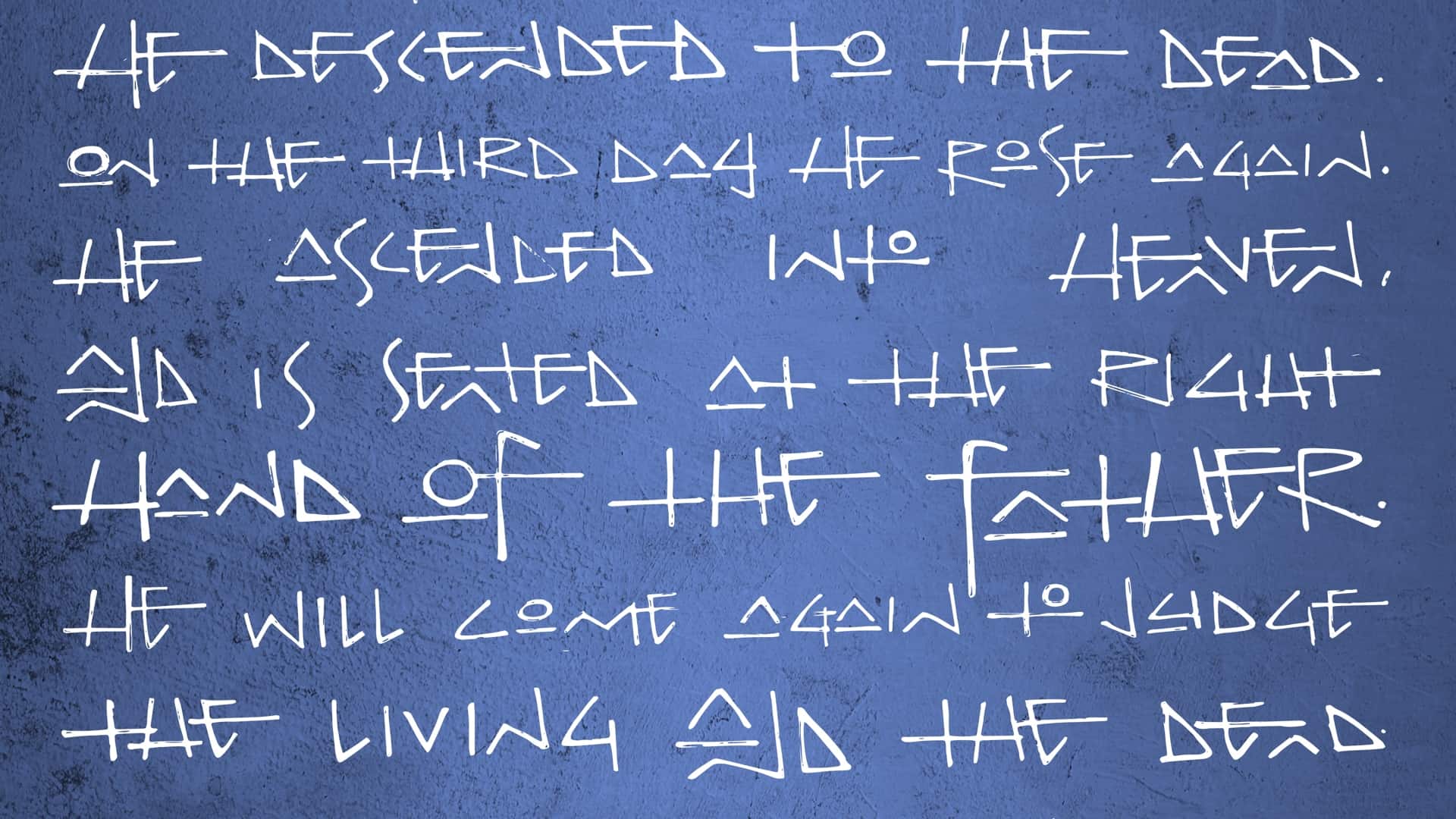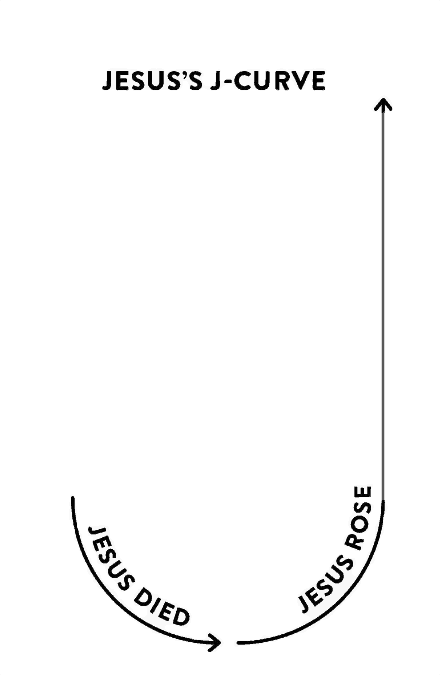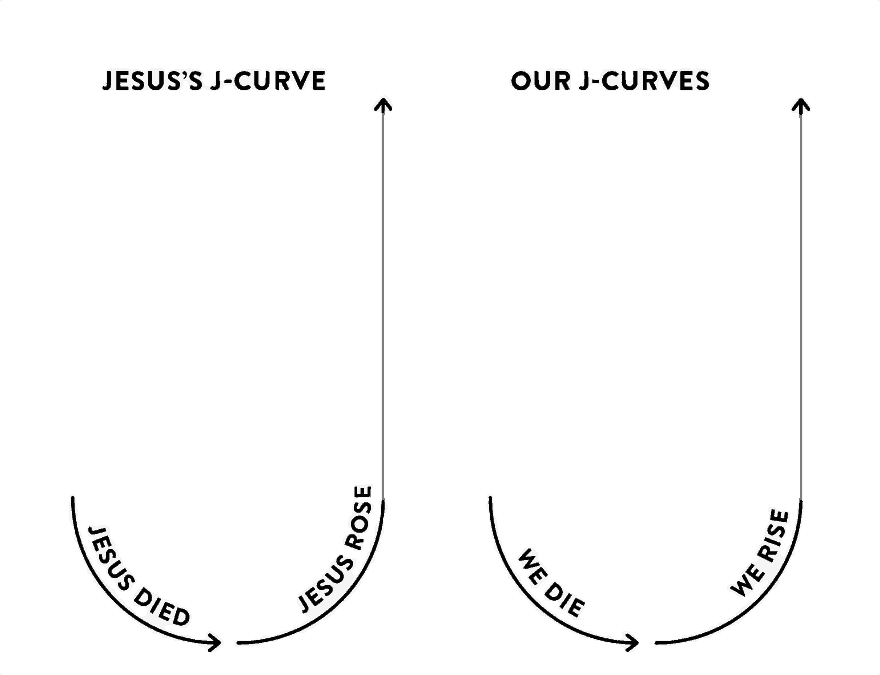To Go Up, Jesus Went Down (Philippians 2:1-11)

Big Idea: To go up, Jesus went down — and that’s the path for us to follow too.
“Then, what,” asked Turnbull, very slowly, as he softly picked a flower, “what is the difference between Christ and Satan?”
“It is quite simple,” replied the Highlander. “Christ descended into hell; Satan fell into it.”
“Does it make much odds?” asked the free thinker.
“It makes all the odds,” said the other. “One of them wanted to go up and went down; the other wanted to go down and went up.”
That passage from G.K. Chesterton’s book The Ball and the Cross is gold. What is the difference between Christ and Satan — really, what is the difference between Jesus and all of us? We want to go up and end up going down; Jesus wanted to go down and as a result he went up.
Okay, let’s see if we can make sense of this. We’re in a series on the Apostle’s Creed. It’s about the basic beliefs that all Christians hold. Today we’re going to be halfway through the main categories of the Apostle’s Creed: Father, Son, Spirit, and church.
So far we’ve covered:
I believe in God the Father, Almighty, Maker of heaven and earth
And in Jesus Christ, his only begotten Son, our Lord
We’ve covered who the Father is and who the Son is. Today we’re going to cover what God the Son did:
Who was conceived by the Holy Ghost, born of the Virgin Mary
Suffered under Pontius Pilate; was crucified, dead and buried; He descended into hell
The third day he rose again from the dead
He ascended into heaven, and sits at the right hand of God the Father Almighty
From thence he shall come to judge the quick and the dead…
Whew. That’s a lot. We’ve covered 23 words over 3 weeks, and today we’re going to cover 65. That means we have to pick up our pace a little!
Let’s look at this very important part of the creed in two parts: what Jesus did, and what Jesus calls us to do.
What Jesus Did
Here’s a brief summary of what the creed says about what Jesus did:
- he was born miraculously
- he suffered and died
- he rose from the dead
- he ascended to heaven where he reigns
- he is coming back again
It’s remarkably similar to the passage we just read in Philippians 2. You can plot what Jesus did on a J, as Paul Miller describes in his excellent book J-Curve.

Look at Jesus’ descent, as described by Paul in this passage and by the Apostle’s Creed. Jesus descended. He willingly gave up his power and control:
- He was in heaven showing God’s glory. He was in the form of God. He inwardly possessed and outwardly displayed the very nature of God himself (Alec Motyer). In other words, before being born, Jesus was displayed divine majesty and splendor. He displayed God’s glory.
- But then he was born as a human, taking on the form of a servant. As the creed says, he was “conceived by the Holy Ghost, born of the Virgin Mary.” God the Son himself voluntarily humbled himself, taking the downward path from heaven’s throne to the birth canal of an unmarried peasant girl.
- And then he “suffered under Pontius Pilate; was crucified, dead and buried; He descended into hell.” He became “obedient to the point of death, even death on a cross” (Philippians 2:8).
It’s important to understand what the creed means when it says he “descended to hell.” Theologian Michael Bird explains:
More needs to be said about Hades/Sheol (let’s just call it “Hades”). In Jewish tradition—as reflected in the parable of the rich man and Lazarus (Luke 16:19–31)—there is a good part of Hades for the saints and a punitive part of Hades for the wicked … Hades simply means the abode of the dead wherever that location happens to be.
In other words, Jesus really died. He suffered a real physical death.
Just think about this. Jesus went down for us. He went all the way down. He was as elevated and glorious as you can get, and out of love he went as low as you can get — giving up all his rights, and not only becoming human but dying for us. He went as low as you can possibly be.
And what happened when he did this?
Therefore God has highly exalted him and bestowed on him the name that is above every name, so that at the name of Jesus every knee should bow, in heaven and on earth and under the earth, and every tongue confess that Jesus Christ is Lord, to the glory of God the Father. (Philippians 2:9–11)
Jesus rose. Jesus defeated death. Jesus ascended to heaven and now reigns at God’s right hand. Jesus is coming back again, and everyone will one day bow before him and acknowledge who he is, and he will set this world right.
This is remarkable, and tells us so much about God. Paul Miller calls this the descent of love, which leads to the power of resurrection.
Our whole problem is that we wanted to elevate ourselves: to put ourselves above God. God’s solution to our problem was not to elevate himself, but for God the Son to humble himself and become one of us. The way up is down, Jesus tells us.
What kind of God does this? What kind of God humbles himself for rebels? Gives up this throne? What kind of God goes down for the sake of humans who tried to rise up? Only Jesus. Only Jesus is like this.
This is the great news of Christianity. This is what we celebrate every week when we meet together. This is why we celebrate the Lord’s Supper every week. This is the amazing news about who Jesus is and what he has done for us.
If you are a Christian, join me in worshiping this Jesus. There is nobody like him. If you are not a Christian, then I invite you to trust in the only one who has acted in such a dramatic way to save you. There’s nobody quite like Jesus.
Here’s how I would summarize what we’ve said so far: To go up, Jesus went down. That’s how God operates.
What Jesus Calls Us to Do
Okay, that’s what the Apostle’s Creed teaches us about what Jesus did. Now we get to the surprising part: what this has to do with us.
We’ve already covered the first thing we should do. How do you respond to a God who acts this way? Worship him and trust him.
But what else should we do? Paul tells us in Philippians: “Let each of you look not only to his own interests, but also to the interests of others. Have this mind among yourselves, which is yours in Christ Jesus” (Philippians 2:4-5).
In other words, Jesus’ J-Curve is supposed to become ours:

“Jesus lived the J-Curve for me, so that he can reproduce the J-Curve in me” (Jimmy Agan, quoted in J-Curve). Paul Miller explains:
Paul can’t imagine believing the gospel without becoming like the gospel …
Suffering isn’t strange for Paul. He isn’t merely enduring suffering, coping with it, or even learning from it—he’s celebrating a life that re-enacts the cross and the empty tomb. Paul is describing the normal Christian life …
That’s why martyrdom was so prized by the early church; re-enacting Jesus’s Passion was their glory!
When we embody the story of Jesus, we begin to look like him.
Dying is followed by rising, suffering by comfort. The work of love repeats both the dying and the rising of Jesus.
In other words, we’re all called to take this same downward path. This is the message of the Christian life: not only that Jesus took the downward path so that he could be exalted, but that he calls us to take the downward path because it’s the only way to live the resurrection life.
It’s time for me to make a confession. We just finished a series on 2 Corinthians, which I loved. We went through a number of passages like this: “For as we share abundantly in Christ’s sufferings, so through Christ we share abundantly in comfort too” (2 Corinthians 1:5).
Paul says things like this all the time. For instance, in Philippians:
…that I may know him and the power of his resurrection, and may share his sufferings, becoming like him in his death, that by any means possible I may attain the resurrection from the dead. (Philippians 3:10-11)
I’ve never really been able to understand this. What could it possibly mean to share in Christ’s sufferings as a precursor to experiencing resurrection from the dead?
Now I think I understand a little better. I wish I had spent more time on this as we went through 2 Corinthians.
Jesus’ death is different from ours. After all, his death atoned for our sin. Jesus died as the sinless Son of God, dying in our place, so that our sins could be forgiven. There’s no other death like it.
But we’re still called to share in Jesus’ sufferings. Our lives are meant to model his. We truly are called to share in Jesus’ sufferings. It’s the only path to experiencing his resurrection power.
Karl Barth explains:
The grace of being permitted to believe in Christ is surpassed by the grace of being permitted to suffer for him, of being permitted to walk the way of Christ with Christ himself to the perfection of fellowship with him.
And so I guess I wish I had explored this more. We’re not only called to believe in the one who went down in order to go up, we’re called to follow him too.
If I were to summarize this in one sentence it would be this: To go up, Jesus went down — and that’s the path for us to follow too.
This is very countercultural — but it’s very hopeful too. It means that your sufferings matter. It means that God brings resurrection and exaltation out of humiliation. It means that we can know God better as we suffer along with Jesus. It brings meaning to our sufferings, and enables us to go through the worst that life brings our way with both emotional honesty and hope. It means that we can lay down our lives to serve Christ and others, because the way up is down.
To go up, Jesus went down — and that’s the path for us to follow too.





